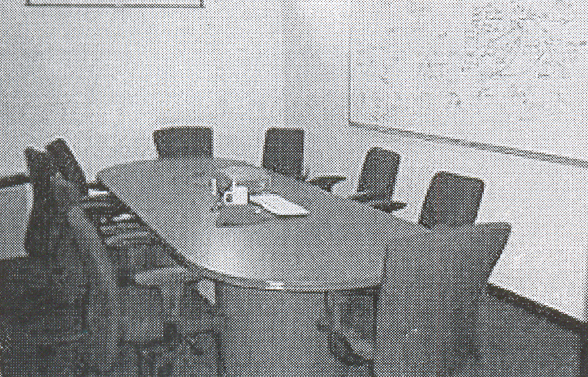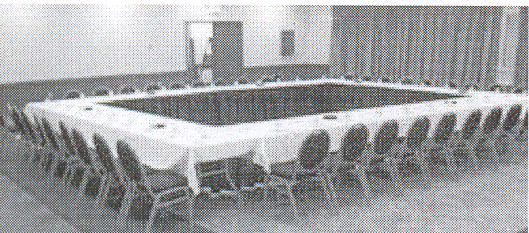
- •Table of contents
- •Introduction
- •Theme 1 communication
- •1. Communication Structure. How do people communicate?
- •2. Objectives of communication
- •3. Communication skills
- •4. Channels of communication
- •5. Barriers to Communication
- •6. Success in communication
- •Please engage brain before opening mouth
- •7. Basic forms of communication
- •Verbal Communication
- •8. Communication spheres of translators
- •Reader Theme 2. Intercultural communication
- •1. Culture of communication
- •2. Intercultural communication
- •3. Translators in Cross-Cultural Communication
- •4. Culture and entertainment
- •Theme 3
- •Verbal communication
- •1. Verbal Communication
- •Verbal languages
- •2. Culture of verbal communication
- •Verbal Etiquette
- •3. Semantic and social nature of language
- •Introductions
- •3. Verbal Activities
- •Theme 4 telephoning
- •Introduction. Nowadays, even with e-mail and the Internet, the telephone is still the most common means of communication in business. Telephone is very important in modern business operations.
- •Words are missed
- •Words are misheard
- •The message is misunderstood.
- •Reader. Theme 5. Non-verbal communication
- •4.1. Introduction
- •4.2. Classification of non-verbal communication
- •4.3. Intercultural differences in non-verbal communication
- •4.4. Visiting another country
- •4.5. Professional skills of translators
- •Theme 6 Applying for a job
- •1. Introduction
- •2. The application itself
- •If possible make a photocopy of the blank form before you start. Use this to make a rough copy and then you can be sure that the final version is laid out as neatly as possible.
- •3. Interview
- •4. Translator in a job interview
- •Information to bring to an interview:
- •5. Cross-cultural interviews
- •6. Job interviews in the usa compared with other cultures
- •Reader. Theme 7
- •Interpersonal communication at work
- •1. Interpersonal Communication
- •2. Interpersonal skills
- •3. Communication climate
- •4. Relations and Processes in Workplace
- •5. People in the Office Environment
- •Reader. Theme 8. Meetings
- •1. Introduction
- •2. Types of meetings
- •3. Meeting procedure
- •Place a watch or clock in a prominent position so you are able to keep an eye on the time.
- •4. Chairing meetings
- •5. Duties of members (attendees, participants) at a meeting
- •6. Teleconferencing
- •7. International meetings
- •8. Business etiquette of the translator
- •8. Vocabulary. Meetings
- •Writing an agenda
- •An example of formal minutes
- •Reader Theme 9. Negotiations
- •1. Introduction
- •2. Types of negotiations
- •3. Stages in negotiation
- •4. Cross-cultural negotiations
- •1. The basis of the relationship
- •2. Information at negotiations
- •3. Negotiation styles
- •5. Grammar of diplomacy in negotiations
- •10 Being open to negotiation. The -ing forms.
- •12. Verbs patterns with recommend / suggest /advise
- •Reader. Unit 10. Presentation
- •1. Public communication
- •2. Presentation
- •Translator and presentation
- •3. From the life of famous orators
- •4. Preparation to presentation
- •5. Delivering a presentation
- •6. Language.
- •6. Public Communication in different cultures
- •7. Presentation language
Reader. Theme 8. Meetings
1. Introduction
Meeting is an event at which people meet to discuss and decide things, often in a formalized setting. People can come together physically (face-to-face meeting) or communicate at different locations (teleconferencing). In organisations, meetings are an important vehicle for human communication.
Translator can participate in meetings as interpreter, member, chairperson or minute writer. So, you have to improve your skills of handling meetings so that they run efficiently.


Meetings are often held in conference rooms, around conference tables.
Purpose of meeting
Passing on information;
Issuing tasks or instructions;
Resolving problems;
Making decisions;
Generating creative ideas (brainstorming).
2. Types of meetings
There are informal meetings over a cup of tea, and there are large formal meetings, with an agenda, the minutes and a chairperson. Most meetings at work are formal, with a prearranged time and venue.
Formal Meetings
Board Meeting is a meeting of the Board of directors of an organization. It usually takes place at regular intervals, perhaps once a month, to discuss company business.
Annual General Meeting (AGM) is a yearly gathering of a company’s directors and shareholders to discuss business during the past year and future plans.
Extraordinary General Meeting (EGM) is a meeting that can be called at any time between AGMs if shareholders’ approval is needed for immediate action.
Public Meeting is open to anyone. It may be used by government, private action or groups wishing to consult the public on various issues. There is only one main issue for discussion.
Conference is a meeting at which several presentations are given on one theme.
Meetings within organisation
Staff meeting – typically a meeting between a manager and those that report to the manager
Team meeting – a meeting among colleagues working on various aspects of a team project
Management meeting – a meeting among managers.
Departmental meeting – a meeting of a whole department;
Briefing – a meeting where information or instructions are given before you have to do something.
One-to-one meeting – a meeting between two individuals.
Kick-off meeting is the first meeting with the project team and the client of the project to discuss the role of each team player.
Impromptu meeting is called at a very short notice.
3. Meeting procedure
Formal procedure provides a ready-made framework for running a meeting. Order of procedure:
O
Place a watch or clock in a prominent position so you are able to keep an eye on the time.
pen meeting;Approve previous minutes;
Propose motions;
Deal with motions;
Pass resolutions;
Close meeting.
Before opening a formal meeting, ensure that:
Proper notice has been given to all necessary attendees;
A quorum (the minimum number of people required) is present.
4. Chairing meetings
A chairperson is a person in charge of running a meeting. The person in the chair will be obliged to start things off and make sure topics are discussed in the right order.
Responsibilities of the Chair:
Open a meeting with a short summary of its purpose and agenda;
Define the time limits of discussion;
Allow all parties to express their views on the subject under discussion; listen to the views of others;
Keep people to the point and ensure that one person speaks at a time; prevent irrelevant debate;
Be as impartial as possible and avoid arguing with members;
Stimulate members by asking appropriate questions.
S
 ummarise
views and decisions.
ummarise
views and decisions.
